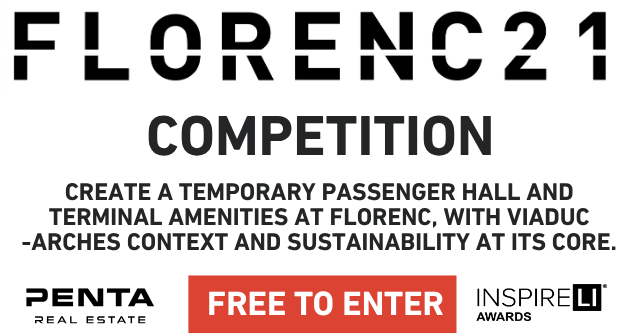No Demo Znojmo
Idea projektu
Projekt No Demo Znojmo počítá s postupnou regenerací roztříštěné čtvrti na severním okraji historického centra Znojma - oblasti hluboce poznamenané dědictvím socialistického urbanismu, který narušil kontinuitu a charakter města. Namísto vymazání této minulosti prostřednictvím demolice se projekt zaměřuje na strategii pečlivé transformace: začlenění izolovaných poválečných struktur do soudržné městské struktury, adaptaci stávajících budov a reaktivaci prostor s novými sociálními, kulturními a ekonomickými funkcemi. Od opětovného využití bývalých městských lázní až po přeměnu zaniklé infrastruktury návrh ukazuje, že smysluplná změna města může vzniknout nikoliv prostřednictvím tabula rasa, ale respektujícím vývojem vrstvu po vrstvě, který znovu propojí historii města s jeho budoucností.
Popis projektu
No Demo Znojmo je urbanistický projekt zaměřený na proměnu roztříštěné čtvrti na okraji historického centra Znojma - oblasti, kde se střetávají tři odlišné modely města: středověké město, bloková struktura z 19. století a modernistické město formované socialistickým plánováním. Projekt se zabývá důsledky minulých zásahů - zejména rušivým dopadem poválečného urbanismu, který zavedl solitérní budovy, rozsáhlou silniční infrastrukturu a nedefinované prostory, jež narušily kontinuitu města. Namísto čistého přístupu navrhuje No Demo Znojmo budoucnost zakořeněnou v kontinuitě, paměti a postupných změnách. Jeho jádrem je závazek zachovat město prostřednictvím adaptace. Stávající struktury - jako jsou nevyužívané městské lázně a teplárna - jsou nově pojaty jako katalyzátory sociální a architektonické regenerace. Nová zástavba propojuje městskou strukturu, obnovuje jasnou prostorovou hierarchii a zavádí bloky se smíšeným využitím, které kombinují bydlení, obchod a veřejnou vybavenost. Demolice je omezena na minimum a používá se pouze tam, kde to vyžaduje bezpečnost nebo funkčnost. Jinde je strategií návrhu "rámování stávajícího": spíše přeměna než nahrazování, spíše doplňování než vymazávání. Tento přístup umožňuje, aby čtvrť organicky vyrostla v soudržnou, živou a sociálně živou čtvrť, v níž se snoubí minulost s budoucností - a která dokazuje, že dobrý urbanismus nemusí začínat od nuly.
Technické informace
No Demo Znojmo je urbanistický návrh zaměřený na revitalizaci okolí Náměstí Svobody, náměstí na severním okraji historického centra Znojma. Projekt reaguje na roztříštěnou urbanistickou strukturu, utvářenou poválečnou výstavbou a modernistickými urbanistickými zásahy. Jeho hlavní ambicí je obnovit kontinuitu města bez rozsáhlých demolic - prostřednictvím renovací, přístaveb a začlenění stávajících budov do nově definované městské struktury. Programové uspořádání lokality je smíšené. Nové městské bloky jsou převážně polyfunkční, s komerčními prostory (služby, maloobchod, drobné podniky) v přízemí a řadou bytových jednotek nad nimi - od kompaktních ateliérů až po větší rodinné byty a mezonety v řadových domech. Veřejná vybavenost zahrnuje komunitní centrum umístěné v přestavěných městských lázních, mateřskou školu a sportovní a volnočasová zařízení, jako je bikepark a skatepark. Bývalá teplárna je navržena k přeměně na malý pivovar nebo společensko-kulturní zařízení. Celková rozloha areálu činí přibližně 9,5 hektaru. Návrh vymezuje dva hlavní veřejné prostory: nově navržené Náměstí Svobody, centrální pěší osu navazující na znojemský Zelený okruh, a nově navržené Stanislavovo náměstí, které propojuje stávající panelovou zástavbu s novými městskými strukturami. Přilehlý Horní park je rozšířen a lépe vymezen, čímž se zlepšuje jeho společenský dohled a prostorová kvalita. Nová zástavba se pohybuje převážně mezi třemi a čtyřmi podlažími, čímž je zachován soulad s historickým měřítkem města. Stávající panelové domy (až osmipodlažní) jsou zachovány a částečně revitalizovány - například aktivací jejich přízemí nebo přístavbou řadových domů. Nová zástavba respektuje logiku blokové zástavby 19. století a zároveň vytváří přechod k solitérním stavbám modernistické éry. Doprava je řešena budoucí dostavbou obchvatu města, která umožní zklidnění Pražské ulice. Nová okružní křižovatka zlepší plynulost dopravy do centra města. Každý nový blok obsahuje vlastní podzemní garáže a jsou navrženy dva větší sdílené parkovací objekty: jedna veřejná garáž pod Náměstím Svobody a druhá zapuštěná do struktury nového bloku. Zastaralé a nebezpečné individuální garáže budou odstraněny. Zastávka místní hromadné dopravy je přemístěna blíže k centru. Chodníky pro pěší jsou posíleny a začleněny do širší sítě znojemského Zeleného okruhu a sledu veřejných piazzet vycházejících z historického jádra. Projekt nabízí komplexní a zároveň citlivý přístup k obnově města. Spíše než aby vymazal stávající kontext, staví na něm prostřednictvím transformace, přizpůsobení a postupné integrace - výsledkem je soudržná, živá a sociálně udržitelná čtvrť.
Cyril Novotný
FAST VUT - Faculty of Civil Engineering, Brno University of Technology, Department of Architecture
Czech Republic
Urbanismus
Projekt odevzdán
13. 06. 2025Tag
- Playground
- Parks
- Public spaces
- Gardens
- Waterway
- Cemetery


